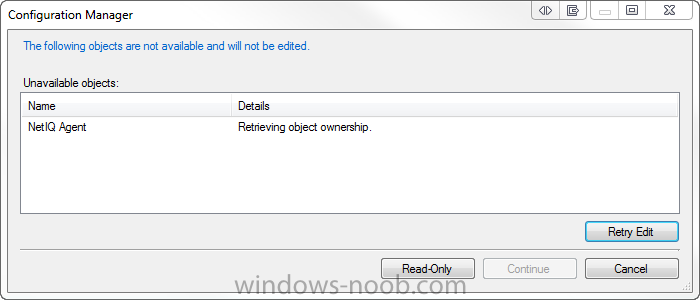Search the Community
Showing results for tags 'recovery'.
-
HI On a Windows 10 OSD TS, i want ot add the Bitlocker recover Key to Azure for Hybrid Joined devices. How can i achive this from an SCCM TS? Thanks
-
- hybrid azuread join
- task sequence
-
(and 3 more)
Tagged with:
-
Hi all, Not sure if this is the right place to ask but will try anyhow. My college want to do BIOS configuration during OSD (image deployment with MDT) when preparing different Dell PC models to Win10, but I want to use the CCTK tool (from Dell) to do the configuration. My college will make the necessary configuration manually and then do a BIOS backup, and then during OSD deployment make a recovery from the backup for each model. I want to use the tool CCTK in WinPE and then do one configuration at a time with the necessary commands/parameters for "Legacy to UEFI, Enable SecureBoot, Enable virtualization,Enable/active TPM". Which of these two suggestion would be best to prepare the BIOS to Windows 10 installation? Best Regards, Daniel Skaaning
-
Specs MS Server 2016 Std GUI Clients Win7 Ent x64 DPM 2016 Std hi All, we have just implemented DPM 2016 to replace our flaky 2012r2 server. As usual with DPM, there is a large optical at every installation point that means you have to go and get a patch file from somewhere or you have to follow an online guide for a part that Microsoft omit to mention in their installation notes. but finally the install is complete. The last part of the install is to enable end user recovery so link the volume shadow service to the users pc's. I have followed every guide i can find and they're all just about the same. Extend the schema (running the tool to the DC) enable end user recovery in the DPM Console Run a synchronisation to apply the changes. All of the above have been done and i cannot get the shadow copies to appear (but recovery points are still appearing on the server). Any help would be appreciated Thanks Matt
-
Hi.. I'm in a weird situation . This morning we found out our primary 1 has lost many desktops(75% of the company systems) from the console(do not know the exact reason yet). So at the end of the day we started recovering the primary 1(site server and data base) with the backups and it was successful. We were about to say woohoo, lets wrap it up and go home ...But As soon as the primary 1 restored all the data from backup files, CAS started replicating the current data (25% data) making the primary go back to the messed up state. Now, we do not want to recover the CAS and the primary 2 to bring the primary 1 up. It will be very helpful to know, if there are any other options left for me to try(before the sun rise). Any help Thanks Sana
-
Hey All / Niall - This is my 2nd day at a new environment where SCCM 2012 SP1 was recently introduced. It's set up as a CAS and so far the only things set up were mostly admin things like boundaries and just over 30 secondary sites. The primary site has two SCCM servers - "CCM01" (Win08R2) is the CAS and "CCM02"(Win08R2) the Primary. These are both physical boxes... When working on some packages, I noticed that there seemed to be issues with replication as I got error messages when trying to open / view / edit packages / applications when connected to CCM01 (attached below). When connected to CCM02 things worked great. I did some research and thought I'd revisit it today. This morning I came in and CCM02 (the primary) is down and out. For whatever reason, it's stuck at "Starting Windows" and even safe mode won't bypass that. My manager has been looking at it and decided that since the secondary sites are 2012, that we just blow away the old and rebuild the OS partition of CCM02 fresh and using 2012. When I open the Console, I obviously cannot connect to CCM01, but can to CCM02. Just like yesterday, I cannot view/edit/open Packages & applications, but there's only a few. The infrastructure, boundaries, and all the important stuff seems to be there still. The Issue / Question So... my question is, is there a procedure to do this? There were obviously replication issues to the point I'll probably delete and recreate all programs from scratch, but is this safe? We do have backups of CCM02, but they don't want to restore them because they said the server was built incorrectly in the beginning anyways plus want to go to 2012. Please let me know any thoughts, suggestions, or ideas - Thanks!



